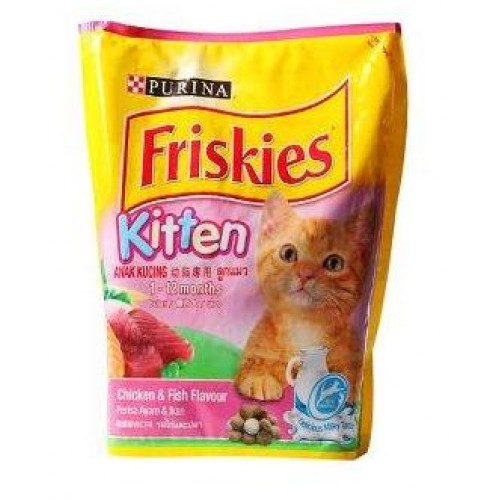


1. How do kittens’ nutritional needs differ from those of adult cats?
A kitten’s weight may double or even triple during the first few weeks of life. To support this explosive growth -- as well as high activity levels -- your kitten may have triple the energy needs of an adult cat.
These high energy needs make it harder for kittens to get enough calories in one meal, says Jennifer Larsen, DVM, PhD, nutritional consultant and assistant professor of clinical nutrition at the Veterinary Medical Teaching Hospital at the University of California, Davis. “So most kittens want to eat at least three or four meals a day,” she says. “It’s also a comfort thing -- kittens are snackers at heart.”
Kittens’ needs for fat, some fatty acids, and most vitamins are the same as for adult cats, Larsen says. But kittens have a higher requirement for protein, amino acids, and minerals, as well as for some vitamins. For example, kittens should get about 30% of their energy from protein.
For these reasons, most experts recommend you feed your kitten specially formulated kitten food until age 1. Although some cat foods are labeled as appropriate for kittens and cats of all life stages, these aren’t appropriate for your kitten unless feeding tests support the label claim.
And don’t forget to provide plenty of fresh water -- it’s a key to keeping cats of all ages healthy.
2. How can I know I’m selecting a high-quality kitten food?
Mindy Bough, CVT, senior director of client services for the Midwest Office of the American Society for the Prevention of Cruelty to Animals (ASPCA) emphasizes the importance of high-quality kitten food. “I don’t recommend generic or store brands,” Bough says. Buy from a reputable company -- one that veterinarians recommend more frequently, she says. “Research has determined these kitten foods provide excellent health.”
But how can you be certain a kitten food is of high quality? One way is by checking the label. It should at least contain the following: “Meets the nutritional requirements of kittens established by the American Association of Feed Control Officials (AAFCO).” AAFCO is a group of state and federal officials who regulate pet food. Even better, look for this: “Complete and balanced nutrition for kittens based on AAFCO feeding trials.” “Complete and balanced nutrition” means your kitten will require no mineral or vitamin supplementation. In fact, remember that too much of a “good thing” can be bad for your kitten, causing severe medical problems. Use supplements only if your veterinarian recommends them.
Also use caution with homemade diets. For example, all-meat homemade diets can be low in calcium, leading to a mineral imbalance that causes hyperparathyroidism, a disease more common in rapidly growing kittens. “If you use a homemade diet, make sure it’s been formulated by a reputable nutritionist,” Bough says.
After feeding for a period of time, you be the judge. With proper nutrition, your kitten should be healthy and alert, have a steady weight gain, and a clean, glossy coat. If not, check with your veterinarian about possible diet changes or ruling out any health problems.
3. What type of food does my kitten need, wet or dry?
It’s important that very young kittens have at least some canned food to eat as part of their diet. Very small kittens have very small teeth and can’t chew dry food well. Without some canned food, they won’t get enough nutrition to grow properly. If you are feeding your kitten both dry and canned foods, then twice a day canned feedings are sufficient. If they’re only eating canned food, they should be fed four times daily.
4. How do I switch from one kitten food to another?
Cats are often considered the epitome of the “picky eater.” But it doesn’t have to be that way. Get your kitten started off on the right paw.
“Young cats need more frequent feeding,” Bough says, “But as they get older, they can go to twice-a-day feeding.”
Larsen agrees that it’s fine for young kittens to “free feed,” by making unlimited kitten food available to them all day long, and then to transition to meal eating around four to six months of age. Free-choice feeding has the additional benefit of reducing stomach distention resulting from rapid meal eating. It also helps underweight or slow-growing kittens. Of course, it’s not the best option for overweight or obese kittens. For these kittens, measured portions offered as meals or until gone is a better choice. Check packages for suggested amounts. Even with the energy needs of kittens, overfeeding can become a big problem.
“Especially control intake around the time of spaying and neutering, which increases the risk for obesity,” Larsen says. “Preventing obesity is preferable to addressing it once it’s already occurred.”
6. Are there foods I should avoid giving my kitten?
It’s OK to feed your kitten treats, as long as you follow the “10% calorie rule,” Larsen says. This means that treats should make up less than 10% of your kitten’s total calorie intake. But this doesn’t mean it’s a good idea to turn your leftover table scraps into treats for your kitten. Also, take precautions with the following foods:
- Raw meat or liver may contain parasites and harmful bacteria.
- Raw eggs may contain Salmonella and may decrease absorption of a B vitamin, leading to skin and hair coat problems.
- Raw fish may lead to a B vitamin deficiency, causing loss of appetite, seizures, and even death.
- Milk may cause diarrhea in weaned kittens and cats because they lose the enzyme needed to break down milk.
In addition, onions, garlic, chocolate, coffee, tea, raisins, or grapes can be toxic to kittens and cats.
source : http://pets.webmd.com/




No comments:
Post a Comment